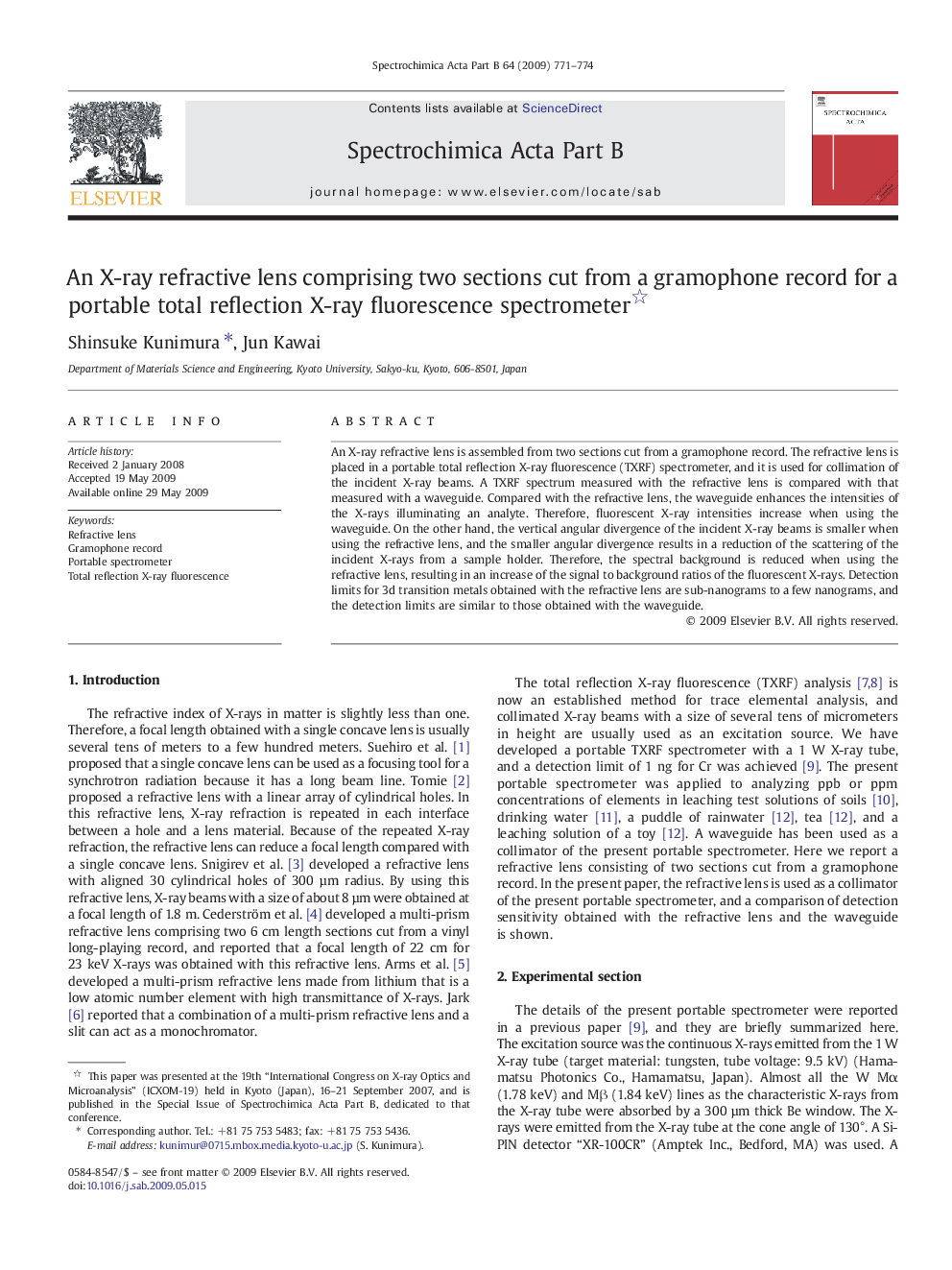| Article ID | Journal | Published Year | Pages | File Type |
|---|---|---|---|---|
| 1240878 | Spectrochimica Acta Part B: Atomic Spectroscopy | 2009 | 4 Pages |
Abstract
An X-ray refractive lens is assembled from two sections cut from a gramophone record. The refractive lens is placed in a portable total reflection X-ray fluorescence (TXRF) spectrometer, and it is used for collimation of the incident X-ray beams. A TXRF spectrum measured with the refractive lens is compared with that measured with a waveguide. Compared with the refractive lens, the waveguide enhances the intensities of the X-rays illuminating an analyte. Therefore, fluorescent X-ray intensities increase when using the waveguide. On the other hand, the vertical angular divergence of the incident X-ray beams is smaller when using the refractive lens, and the smaller angular divergence results in a reduction of the scattering of the incident X-rays from a sample holder. Therefore, the spectral background is reduced when using the refractive lens, resulting in an increase of the signal to background ratios of the fluorescent X-rays. Detection limits for 3d transition metals obtained with the refractive lens are sub-nanograms to a few nanograms, and the detection limits are similar to those obtained with the waveguide.
Related Topics
Physical Sciences and Engineering
Chemistry
Analytical Chemistry
Authors
Shinsuke Kunimura, Jun Kawai,
